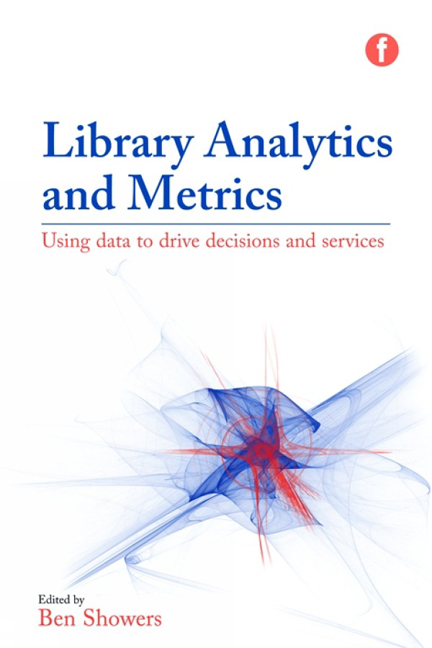Book contents
- Frontmatter
- Dedication
- Contents
- List of figures and tables
- Contributors
- Acknowledgements
- Introduction: getting the measure of analytics and metrics
- 1 Library data: big and small
- 2 Data-driven collections management
- 3 Using data to demonstrate library impact and value
- 4 Going beyond the numbers: using qualitative research to transform the library user's experience
- 5 Web and social media metrics for the cultural heritage sector
- 6 Understanding and managing the risks of analytics
- 7 Conclusion: towards a data-driven future?
- Index
Introduction: getting the measure of analytics and metrics
Published online by Cambridge University Press: 09 June 2018
- Frontmatter
- Dedication
- Contents
- List of figures and tables
- Contributors
- Acknowledgements
- Introduction: getting the measure of analytics and metrics
- 1 Library data: big and small
- 2 Data-driven collections management
- 3 Using data to demonstrate library impact and value
- 4 Going beyond the numbers: using qualitative research to transform the library user's experience
- 5 Web and social media metrics for the cultural heritage sector
- 6 Understanding and managing the risks of analytics
- 7 Conclusion: towards a data-driven future?
- Index
Summary
It seems that almost every aspect of our lives and the world around us is on the cusp of being transformed by the potential that data and the analysis of that data hold for the services and products we use and activities we undertake. Businesses and services are adopting analytics to help drive more informed decisions, to gain a better understanding of their customers and users and to make sense of the ‘big data’ created by all those interactions and actions. The potential appears limitless: from healthcare to education and from government to business.
Similarly, individuals are increasingly using analytics to help improve their performance and understanding of themselves. The ‘quantified self’ captures data from activities as diverse as running and sport, through to sleeping and general well-being. These popular apps and services enable the collection and analysis of data to help improve performance in whatever it is you're trying to achieve, whether running, sleeping or productivity at work.
The aim of this book is to explore the potential of analytics at an institutional and organizational level: how analytics can unlock a better understanding of your users, inform decision making and help drive new services.
Library analytics
Libraries, along with archives, museums and galleries, find themselves ideally placed to exploit the full potential of analytics.
Libraries, and the cultural sector more generally, have long been familiar with the potential of statistics and data for informing everything from service development to measurement of impact and value (both locally within the institution and nationally – and even internationally). The variety and scope of the data collected and generated by libraries and organizations such as museums and archives is significant: transactional data on catalogue searches, item check-outs, log-ins to online resources and services, swipes through the entrance gates; manually collected statistics on space usage, student satisfaction, external visitors to the library. The applications of the data are equally varied and overlapping, including management functions (collections development and management, usage statistics), impact (demonstrating value, benchmarking, improving learner outcomes) and improving services and meeting user requirements (recommendation services, collections management/development).
- Type
- Chapter
- Information
- Library Analytics and MetricsUsing Data to Drive Decisions and Services, pp. xxv - xxxiiPublisher: FacetPrint publication year: 2015



